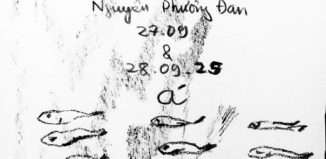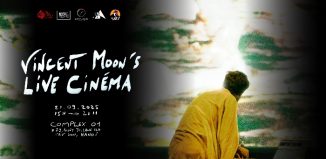KVT – The Russian, the American, the VNSO, The Opera House = A 5 Star Night

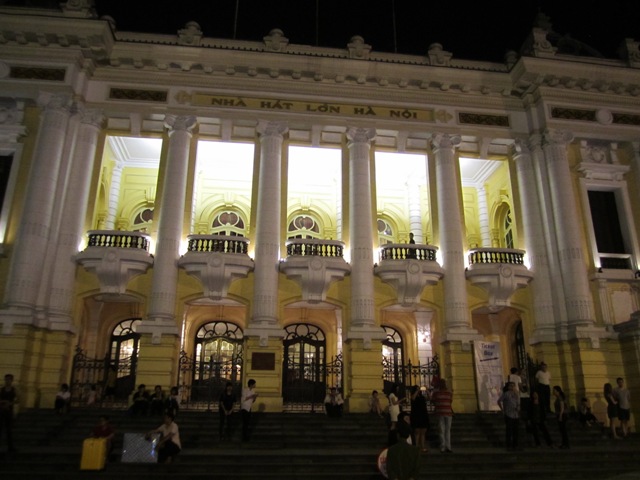
KVT has yet another of THOSE nights with the VNSO!

Last weekend I had two brilliant nights at the Opera House…it was the same program on both nights.
After experiencing the flash and rush of a Russian’s nimble fingers over the keys of the grand piano on Friday it was impossible to stay away from the grand old place on Saturday for a repeat.
Guest American conductor, the very personable, very excellent, extremely enthusiastic, and Grammy award winning David Alan Miller, has had an empathetic relationship with the Vietnam National Symphony Orchestra for a few years and his touch brings out the best in the whole ensemble
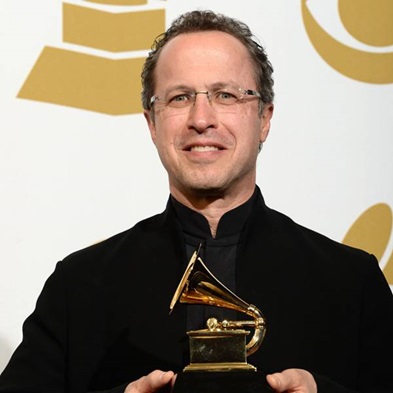
It was a night when the US and Russia got along famously!
OH THOSE RUSSIANS!
Thirty one year old Ilya Rashkovskiy of the nimble fingers represented the Russians and chose Prokofiev’s magnificent Piano Concerto No 3 as his modus operandi
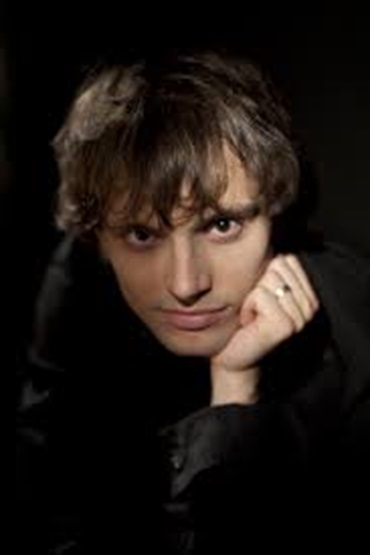
The handsome Ilya is no stranger to Prokofiev and in 2011 got third prize by playing the almost impossible Concerto No 2 in the Artur Rubenstein Piano Masters competition in Tel Aviv
[youtube width=”700″ height=”393″]https://www.youtube.com/watch?v=DWSaqIgPn3k[/youtube]
Luckily for us young Prokofiev started his composing life way back in the early teens of the 20th century when many cultural artists in Russia (pre revolution) were going through a ‘circus’ type mode with risks and juggles and high wire tumble turns being part of what the avant garde had to be. Prokofiev entered the fray with music that got conservative hackles rising with the sheer audacity of his work.
Prokofiev was composer and performer of his piano work and when he premiered the first edition of his No 2 in 1913 it’s said that it left the audience frozen in fright with hair standing on edge. It’s a work that is ‘red eyed with rage’
Writer Paul Sarota describes Prokofiev’s early works as youthful ‘heavy metallicism’.
When Prokofiev started to compose No 3 in 1916 the combination of the circus and the metal was in full force as he dedicated himself to exorcising any hints of excessive romanticism.
But the Russian Revolution put a stop to his work for 5 years and when he returned to No 3 he was in a more lyrical mode though thankfully that high wire and heavy metal part of his composing personality remained and punctuated his music no matter how much lyrical and romantic content he pushed in.
He played all his own piano works in concert and thus they are devilishly difficult….not only for the pianist but, too, for the orchestras
Ilya , athletic enough to use dazzling Prokofiev tricks, young enough to be a daredevil and youthful enough to comprehend a heavy metal revolt, but romantic enough to be lush and lyrical to assuage the more conservative audience members, had us riveted from the first time his fingers touched the ivories.
Those of us who could see those fingers during the whole thing found it muscle clenchingly brilliant and that roar of applause at the end of the first movement of pure astonishment and joy meant that the rest did too
He had us totally with him as soon as the lone clarinet led the rush of strings into the first fast and furious keyboard extravaganza of the first movement. The oboes and clacking castanets allow the pianist a prolonged vodka moment with the whole inebriated sounding orchestra galloping alongside. A romantic interlude is cast to the winds when the pianist gets going like a dented racing car, daring the orchestra to accompany him… gets fabulously metallic and swishes to a hair rising end
The second movement has five variations of a dance like Russian theme and it goes along smoothly until (as various critics aptly describe) it t becomes almost brutal and satanic with its pounding figures. The pianist sets off like a bat out of hell and the orchestra, particularly the trumpet, sound as though they’ve all been on the vodka-again…that’s if they’re playing in really top form.
Then, after a lyrical interlude the pianist like a nascent volcano starts to build up ready to erupt but pulls back to the stately dance and seems to say…just wait, my time will come!
As for the audience….a lot of us who were breathless and on the edge of our seats, muscles clenched …we have an intake of breath and wait for the real explosion
The third movement puts us in a bit of a tizz because after starting out with fizz and fireworks Prokofiev suddenly throws a superb and beautiful slow movement at us-interspersed with only tingly splinter tips of metallica- but he finally relents and it surges in frenetic, crackling energy and all the romanticism and any rapturous feelings are chucked into the maw of the waiting volcano and spewed out in an hypnotic, buttock clenching, barn storming, cyclonic finale
*Note: plagiarism of Paul Serota in the above is intended!
OH THOSE FINGERS!
Brilliant playing that received prolonged and even more prolonged applause
Here’s a half decent amateur recording of Ilya playing No 3 in competition in Morocco last year (it’s got all the warts and all of unedited pieces including audience coughs) Ilya was in fine form
[youtube width=”700″ height=”393″]https://www.youtube.com/watch?v=p7Bs7lLS9Nw[/youtube]
ONE OF THOSE MUSICAL EXPERIENCES TO SAVOR for a long time…the VNSO is getting more and more of them attached to its biography
Only two weeks they had a top notch concert and to come away from that and give us another so early in the piece speaks volumes for their musical progression, the input of Maestro Miller, and the presence and talent of the young Russian STAR (or should I say: musical Tsar?)
ADAGIO:
The strings have always been a cohesive mob and when the orchestra was invited to play in Carnegie Hall New York a couple of years ago they began their program with the strings playing the most famous of all modern American compositions, Samuel Barber’s 1936 ADAGIO FOR STRINGS.
The Adagio holds great sentiment for most Americans and it was played at ceremonies around the world to commemorate the victims of 9/11 and to many its 8 minutes is a great sigh of sorrow as the strings start as a low hum and gradually shiver to an apex of sheer beauty before fading to hollow, echoing depths.
As one violinist put it…you’d have to be made of rock not to be overcome by its intensity
Even though the work has been utilized more than 50 times in movie soundtracks (eg:Platoon!)and TV shows (including the Simpsons, South Park, and Seinfeld, a good orchestra can make it sing and sigh and emote anew.
The VNSO certainly were very good but due to the freakingly silly management –or similar- at the Opera House, doors to the auditorium are not closed as soon as the music starts and late comers are allowed to climb over, past and onto patrons as they noisily stumble to their seats, check their mobile phones for messages, rattle through programs and also whisper loudly to their neighbors.
Hence the Adagio sort of got a bit lost
I guess the only way to commence a show with the VNSO is for it to play a loud and brassy overture like William Tell or The Barber of Seville rather than something as quiet and meditative as the Adagio… as emotively featured in the clip below of the last scene from the 1960ies movie ‘The Elephant Man’ by David Lynch
[youtube width=”700″ height=”357″]https://www.youtube.com/watch?v=bECVh1dRsZw[/youtube]
elephant
Famous DJ, Tiesto frequently monsters up the Adagio in live performances to adoring fans in a way that would either make the composer blanche with fright or get to his feet and pump his arms in the air
[youtube width=”700″ height=”393″]https://www.youtube.com/watch?v=OSR34RNjTUc[/youtube]
ENIGMATIC VARIATIONS
A minor underlying sub theme of my opinion piece is metallica and to keep up with Tiesto and Co here’s a make believe PR shot of the last composer of the night, Edward Elgar, as some young fans of a couple of modern monsterings of his Nimrod melody from the Enigma Variations would probably imagine him
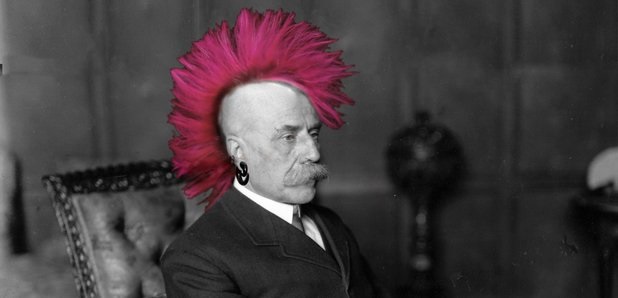
The conductor chose the Enigma Variations for the orchestra and really got the utmost out of them…the players and the 14 short pieces that make up the variations.
Though labeled enigmas, the jury is still out on why -even though many Elgar enthusiasts have shouted out that they have the enigmatic solution.
The 14 pieces –composed in 1896-are musical pictures of some of the composer’s tried and trusted friends with the first dedicated to his wife.
Some friends are clattersome, others retiring but whatever variation of the same theme that Elgar provides them, there are usually nuances of one of the world’s top 10, most swoon-able tunes attempting to sneak to the fore in the first 8 variations before it floods over you like a gardenia scented breeze in the 9th.This heart of the whole composition is nicknamed Nimrod after Elgar’s most enthusiastic friend’s nickname( not the biblical figure who designed the Tower of Babel) Although it was originally centered around a discussion the two friends had- in a garden one balmy summer evening- about the slow movements in Beethoven’s music, it has been commandeered too often and used as a memoriam at funerals and solemn state occasions
An example of Nimrod by Bernstein here – though I wish I had a clip for you to experience Nimrod played as freshly and as full of the imagined scent of rose garlanded summer gardens as I got it on Saturday night, but the VNSO interpretation is not available.
[youtube width=”700″ height=”393″]https://www.youtube.com/watch?v=sUgoBb8m1eE[/youtube]
Nimrod determines to push back to prominence in variations 10, 11, 12 and 13…and in the glorious finale, which is said to be about Elgar and his great friendship with his wife, he triumphs.
Place in the equation some superb solos by cello, viola and clarinet before we get to the finale and you have moments of such extreme beauty that Elgar had to inject a little humor to balance it a bit (number 11 highlights Elgar’s amusement as his friend’ bull dog falls into a river and scrambles out with
And for those who previously associated the piece with brass bands here’s one of the most famous brassy versions
[youtube width=”700″ height=”393″]https://www.youtube.com/watch?v=oyb39zUqeq0[/youtube]
WHAT A NIGHT! Only in Hanoi!
For Prokofiev freaks like me who can’t get enough of the amazing third here’s a clip of the brilliant Martha Agerich playing it at a furiously fast pace…..she refuses to tackle the 2nd
[youtube width=”700″ height=”393″]https://www.youtube.com/watch?v=NOybfjTRCdo[/youtube]
| Kiem Van Tim is a keen observer of life in general and the Hanoi cultural scene in particular and offers some of these observations to the Grapevine. KVT insists that these observations and opinion pieces are not critical reviews. Please see our Comment Guidelines / Moderation Policy and add your thoughts in the comment field below. |


